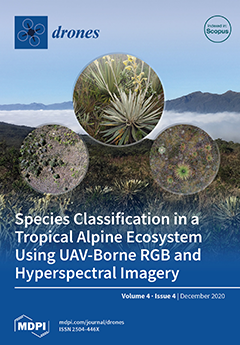Anaphylaxis is a life-threatening condition where delays in medical treatment can be fatal. Such situations would benefit from the drone delivery of an adrenaline auto-injector such as EpiPen
®. This study evaluates the potential risk, reward, and impact of drone transportation on
[...] Read more.
Anaphylaxis is a life-threatening condition where delays in medical treatment can be fatal. Such situations would benefit from the drone delivery of an adrenaline auto-injector such as EpiPen
®. This study evaluates the potential risk, reward, and impact of drone transportation on the stability of adrenaline during episodes of anaphylaxis. Further, this study examines pharmacists’ perceptions on drone delivery—pharmacists approved the use of drones to deliver EpiPen
® during emergencies but had concerns with drone safety and supply chain security. Laboratory simulated onboard drone conditions reflected typical missions. In these experiments, in vitro model and pharmaceutical equivalent formulations were subjected independently to 30 min vibrations at 5, 8.43, and 13.33 Hz, and temperature storage at 4, 25, 40, and 65 °C for 0, 0.5, 3, and 24 h. The chiral composition (an indicator of chemical purity that relates to molecular structure) and concentration of these adrenaline formulations were determined using ultraviolet (UV) and circular dichroism spectroscopy (CD). Adrenaline intrinsic stability was also explored by edge-of-failure experimentation to signpost the uppermost limits for safe transportation. During drone flight with EpiPen
®, the temperature and vibration g-force were 10.7 °C and 1.8 g, respectively. No adverse impact on adrenaline was observed during drone flight and laboratory-simulated conditions shown by conformation to the British Pharmacopeia standards (
p > 0.05 for CD and UV). This study showed that drone delivery of EpiPen
® is feasible. There are more than 15,000 community pharmacies and ≈9000 GP surgeries spanning the UK, which are likely to provide achievable ranges and distances for the direct drone delivery of EpiPen
®. The authors recommend that when designing future missions, in addition to medicine stability testing that models the stresses imposed by drone flight, one must conduct a perceptions survey on the relevant group of medical professionals, because their insights, acceptance, and concerns are extremely valuable for the design and evaluation of the mission.
Full article





